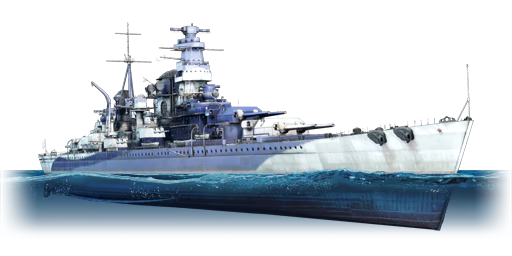The Sevastopol was to be the second ship of the Kronstadt-class battlecruisers (Project 69), laid down on 5 November 1939. Due to delays in the development of the new 305 mm guns and turrets for the class, Stalin personally intervened in 1940, inquiring to a German representative about the possibility of purchasing 380 mm guns from Krupp as part of the Molotov-Ribbentrop Pact signed a year earlier. Since Krupp already had unused turrets and guns produced for the cancelled refit of the Scharnhorst-class battleships before World War II, the sale was finalised that year. The design of the ship was then modified to accommodate the larger guns, designated Project 69-I. However, when Germany invaded the USSR in 1941 and captured the unfinished Sevastopol in Nikolayev, work on the ship was halted. Sevastopol’s hull was then scavenged for metals by the Wehrmacht before being destroyed with explosives when they retreated a year later. Deemed a total loss, her remains were scrapped in 1947.
Introduced in Update "Leviathans", Sevastopol is in the “Project 69-I” configuration, being outfitted with six 380 mm German-built guns instead of nine 305 mm guns. Because of this, she is drastically different from her sister ship Kronshtadt, being more specialised in long-range engagements due to lower volume but more accurate and harder-hitting firepower, not dissimilar to the similar refit of the Gneisenau. However, Sevastopol’s armour protection remains the same as Kronshtadt’s, meaning that she largely relies on her spacious interior to survive. This is not helped by the larger magazine size, resulting in the ship being more prone to magazine explosion.









 2 x (450 / 600) %
2 x (450 / 600) % 
 2 x 226 %
2 x 226 % 
